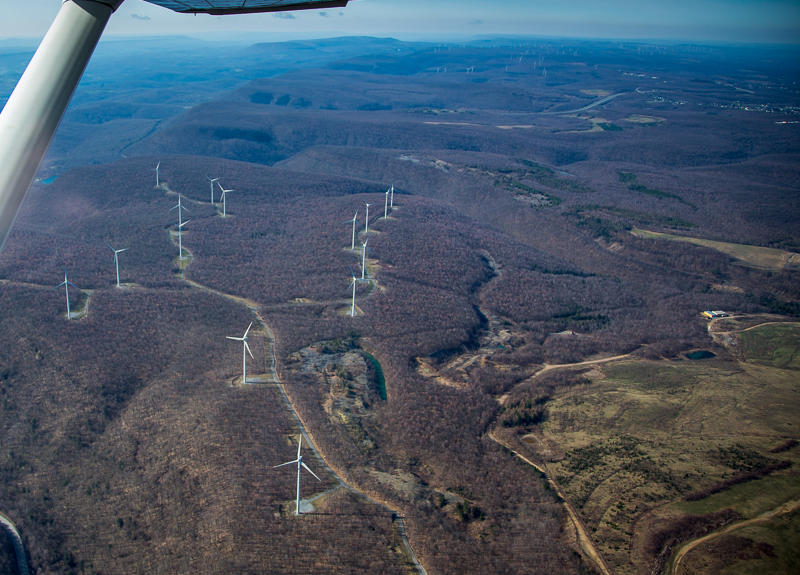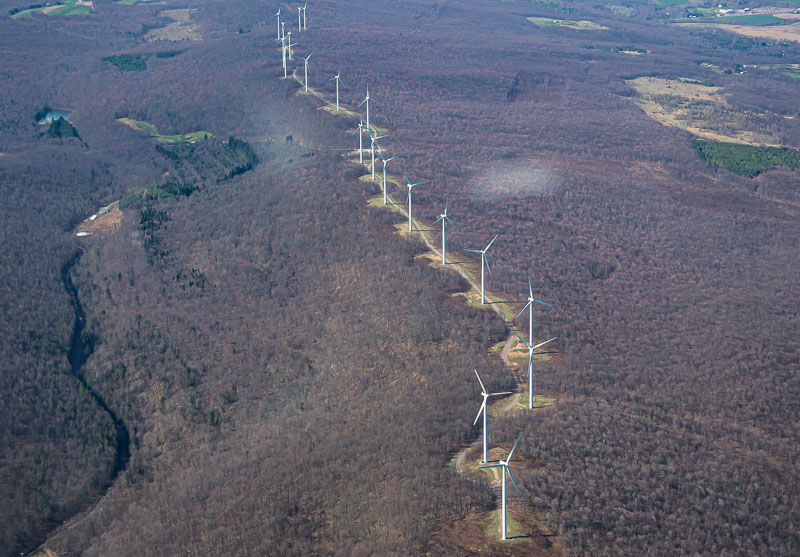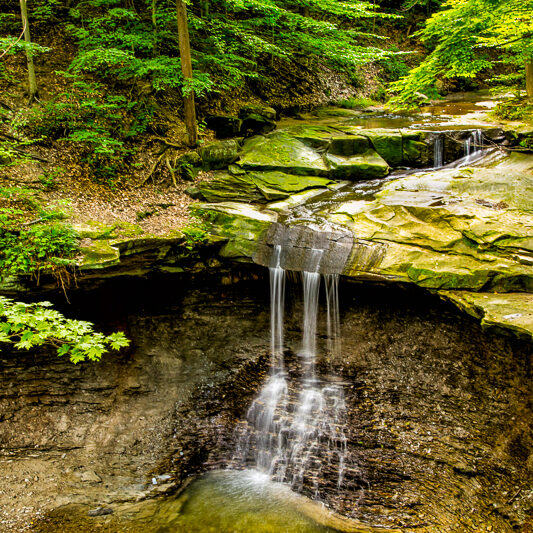Let’s dive deeper into forests.
In Pennsylvania, most of the forests are owned by private landowners. The Center for Private Forests at Penn State works with private forest landowners in the state. According to the Center, there are over 740,000 private landowners who control over 70 percent of Pennsylvania’s forests. Only 9% of forests in the state are State Game Lands and only 12% are State Forests. The Allegheny National Forest is just 3% of the forest land ownership.
There’s a real need for sustainable forest management and the Center provides a lot of resources, training, and support to various groups of private forest landowners. The Center helps landowners understand that forests serve many important ecological functions and that their resiliency is based on species diversity and forest size.
To date, industrial wind projects have only been built on private forest holdings. No wind turbines have been built on state-owned land, although some road crossings have been built on State Game Lands. Many of Pennsylvania’s mountain tops are state-owned land, so that means they are off-limits to wind development.
In 2005, wind development spread rapidly over southcentral Pennsylvania. Wind prospectors knocked on doors, offering lucrative payments to landowners willing to sign a lease. Many landowners didn’t read the fine print, or perhaps didn’t care that they were giving up their property rights when they signed a lease. In some cases, they also gave up their timber rights. Developers were quick to cut trees, bulldoze them under, or set fire to stacks of logs.
Fortunately, many of those wind lease deals fell through, for various reasons, but the higher locations, especially on the Allegheny Front in Somerset and Cambria Counties, sprouted wind turbines.
Forest Fragmentation:
A quick look at today’s projects, listed on the St. Francis Institute for Energy website, shows that Pennsylvania currently has 751 wind turbines (8 were obsolete and removed). Since many of projects were built on forested ridges or plateaus, in long linear formations, there has been extensive forest fragmentation. Some biologists have stated that forest fragmentation might be an even greater threat than estimated bird mortality numbers, since the roads and turbine pads have done extensive damage to the forested habitats.
What is forest fragmentation and why is it a problem?
Michael Snyder does an excellent job of answering this question in an article for Northern Woodlands, Autumn 2014. He explains, “Forest fragmentation is the breaking of large, contiguous, forested areas into smaller pieces of forest; typically these pieces are separated by roads, agriculture, utility corridors, subdivisions, or other human development. It usually occurs incrementally, beginning with cleared patches here and there – think Swiss cheese – within an otherwise unbroken expanse of tree cover.”
He explains that why the effects are so problematic, “By reducing forest health and degrading habitat, fragmentation leads to loss of biodiversity, increases in invasive plants, pests, and pathogens, and reduction in water quality. These wide-ranging effects all stem from two basic problems: fragmentation increases isolation between forest communities and it increases so-called edge effects.”
Many people don’t realize that the effects of forest fragmentation extend 330 feet into the forest; it’s not just the forest opening. Impacts include increased predation, soil dehydration, changes in humidity and light, and invasive species proliferation.
It's true that forest fragmentation may benefit animals like deer, wild turkey, and even timber rattlesnakes by allowing more sunlight to reach the forest floor and provide more food or cover. Wind companies often say that a wind project helps wildlife, but they are usually ignoring all the species that don’t benefit. The state threatened Allegheny Woodrat is a good example of a species that’s already in trouble and in even more peril due to forest fragmentation from wind projects.
The Western Pennsylvania Conservancy, one of the top conservation organizations in the state, collaborated with The Nature Conservancy and Audubon Pennsylvania to develop a Pennsylvania Energy Impacts Assessment in 2010. Although dated, but still relevant today, this study modeled the potential impacts of Marcellus Shale natural gas and wind development in Pennsylvania. These groups understood that not only was the forest removed for energy extraction, but that forest fragmentation reduced the quality and viability of Pennsylvania’s forests.
Sadly, many of the potential impacts described in this report have come true as even more well pads, pipelines, and wind turbine projects intrude on the wild lands and wildlife of Pennsylvania. When the report was published, there were 319 wind turbines in 12 wind projects, mainly on the Allegheny Front and in northeastern PA. The number of turbines has more than doubled to 751 wind turbines. Researchers digitized the amount of impact per turbine and found it to be a total of 15.3 acres of direct and indirect impacts.
Although calculations showed that projected forest losses and affected forest interior habitats would not be significant, they did conclude that impacts could be significant for individual large forest patches where wind development takes place.
Key Findings of this study did not project a high degree of impact on forest habitats or forest interior bird habitats, but as wind turbines become larger the amount of impact may increase significantly.
Conclusion:



